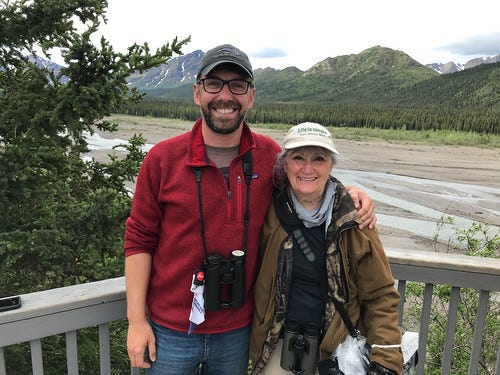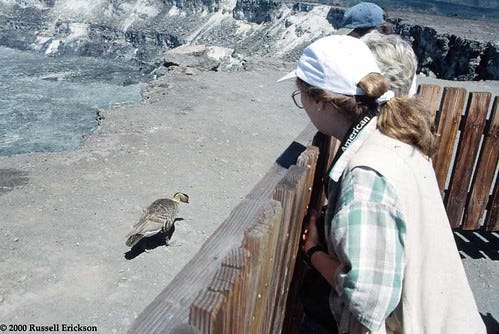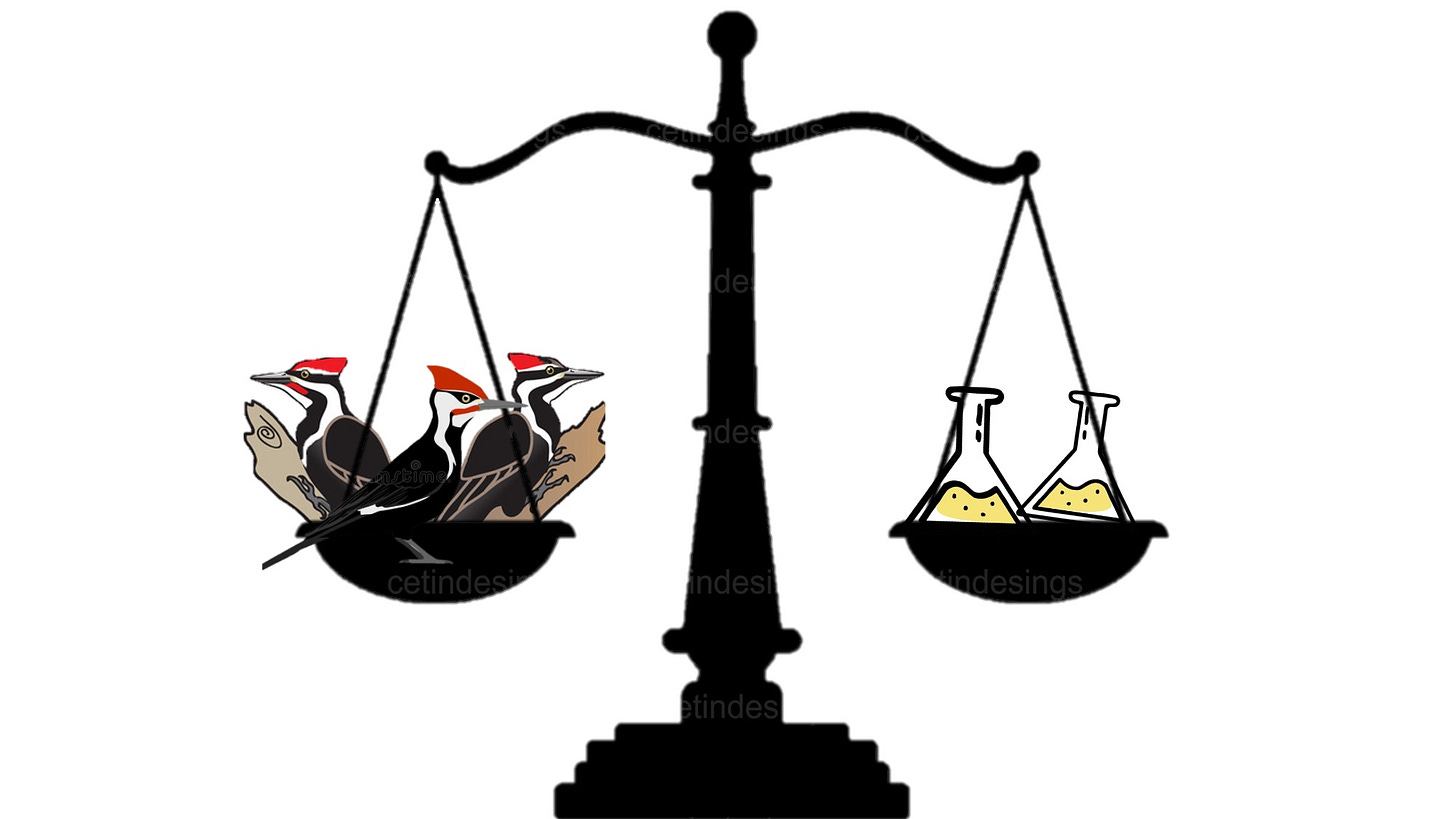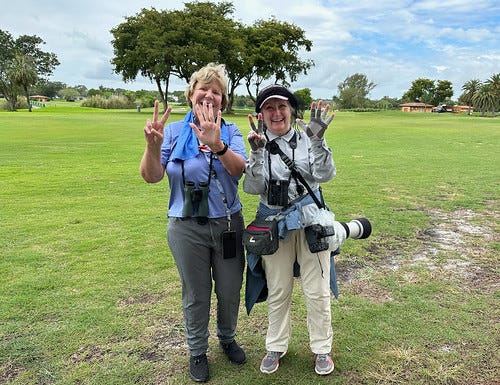(Listen to the radio version here.)
I’ve been pretty much out of it since early November when I found out I had a recurrence of breast cancer—life-altering news no matter how you look at it. As I slowly wrapped my head around likely scenarios, not knowing how long it would take to recover from a bilateral mastectomy, much less any treatments I’d be facing afterwards, my travel plans for 2024 went out the window.
First, I cancelled all my upcoming speaking gigs. I’ve been getting increasingly concerned about these anyway—many of my favorite events are booked months or even a year in advance, which can be iffy at 72 even without my medical history. At my healthiest, I get more worn out than I used to, especially when I’m leading field trips or speaking, and I’ve been grasping for words more, especially when I’m tired. I always planned to quit public speaking before people started complaining that I was too old, and there are so many great young birders stepping into the ranks of the old guard that I’m happy to move on from that chapter of my life.
But other traveling? Over a year ago, Russ and I booked a Victor Emanuel Nature Trip to Hawaii led by our wonderful friend Erik Bruhnke, which begins at the end of February 2024. I was especially thrilled because so many native birds of Hawaii, especially the endemics (those found nowhere else on the planet), are threatened or endangered. Attention must be paid to their plight, but the only time I’ve ever been to Hawaii, in 2000, I wasn’t yet photographing birds.
I use my photos for educational purposes, mostly via my website and this blog. Many of my pictures have also been published in books and magazines, and I give free use of them to the Cornell Lab of Ornithology, the American Bird Conservancy, and several other nonprofits and agencies focused on research, education, and conservation. This is why I was so looking forward to seeing and building up my photo collection of Hawaiian birds. This trip would not bring us to Maui, one of the islands Russ and I visited in 2000, but we’d visit Kauai (we’d never been there!) as well as the Big Island and Oahu, and much of the focus would be on the species who most need our help.
But the doctors, nurses, and physical therapist I consulted seemed pretty negative about whether I’d be up to this kind of adventure, and were especially concerned about me lugging my heavy camera and telephoto lens everywhere. Rather than hang onto a pipe dream, I decided we better cancel. My surgeon said she’d of course sign the travel insurance forms so we could get a refund, and I figured the earlier we cancelled, the more time the VENT office would have to try to fill our places. My disappointment was overshadowed by bigger fears about the upcoming surgery and all the bad possibilities the pathology report might reveal.
I got through surgery just fine. Use of my right arm is just about back to 100 percent, and my left arm (on the side where the tumor and lymph nodes were also removed) is close. I could easily manage my camera just 6 days after surgery and now it's a piece of cake. I had minimal pain from the start, and once the drains were taken out and after I got through a few days of weird, prickly sensations as nerves started reconnecting, I’ve felt, if not quite back to normal, at least pretty darned good.
Even better, the pathology report was excellent. At my appointment with the oncologist last week, I found out this was a Stage I cancer, and I’d definitely not be facing either radiation or chemo.
Knowing that made it less stressful to read through all the clinical information in the pathology report. In total, the tissue specimens excised in my surgery weighed barely more than a kilogram—a bit more than 3 Pileated Woodpeckers, 11 Blue Jays, or 87 chickadees. That’s amazing evidence of how much denser human bodies are than bird bodies. It’s not just a bird’s hollow bones that make it so light for its size—under the thick but featherweight plumage, the body of even the hugest Pileated Woodpecker is shockingly scrawny.
Of course, most of our northern birds are more thickly feathered than Hawaiian birds. There isn’t a single woodpecker, jay, or chickadee that has colonized that distant archipelago, but the I’ iwi, about as long as, or very slightly longer than, a Black-capped Chickadee, weighs almost twice as much—about 45 I’ iwis would balance those tissue specimens of mine. The stunning White Tern, a bird I’m hoping against hope to get nice photos of, weighs about the same as a Blue Jay.
Laysan and Black-footed Albatrosses should be raising chicks on Oahu when we’re there. I’ve never seen any albatross nests, so this promises to be thrilling. Laysan Albatrosses are a LOT heavier than Pileated Woodpeckers—a single one weighs about 7 times more than a Pileated Woodpecker. Black-footed Albatrosses are even bigger—9 times more than a Pileated Woodpecker or triple the weight of my paltry tissue specimens.
Being able to think all this through is pretty strong evidence that I’m getting back to normal a full 2 months before the Hawaiian trip was even going to start. We hadn’t yet started the paperwork for our travel insurance claim, so Russ and I decided to try to cancel our cancellation, and the VENT office was happy to oblige. As scary as 2024 seemed to be looming, we now have plenty to look forward to again. I hope your new year is as promising!











Hurrah! Wonderful news! Your trip to Hawaii will be especially enjoyable!
That is wonderful news. You are amazing and so fit that you are healing quickly. Enjoy your trip!